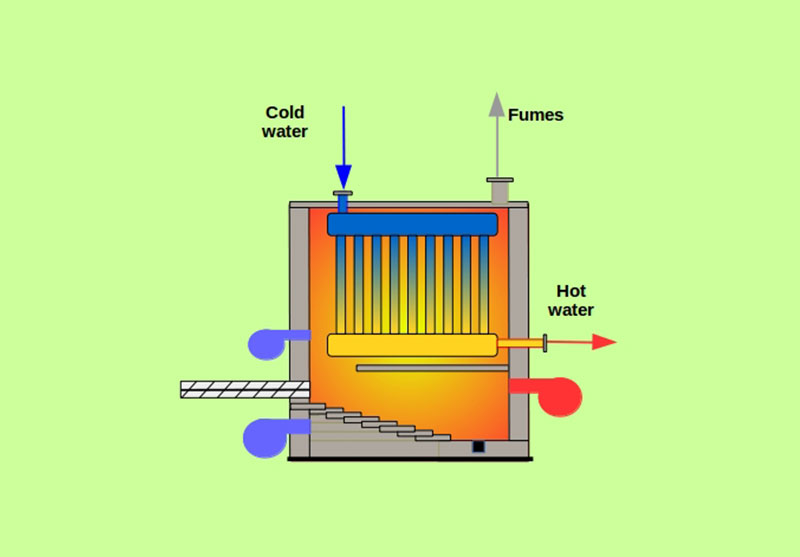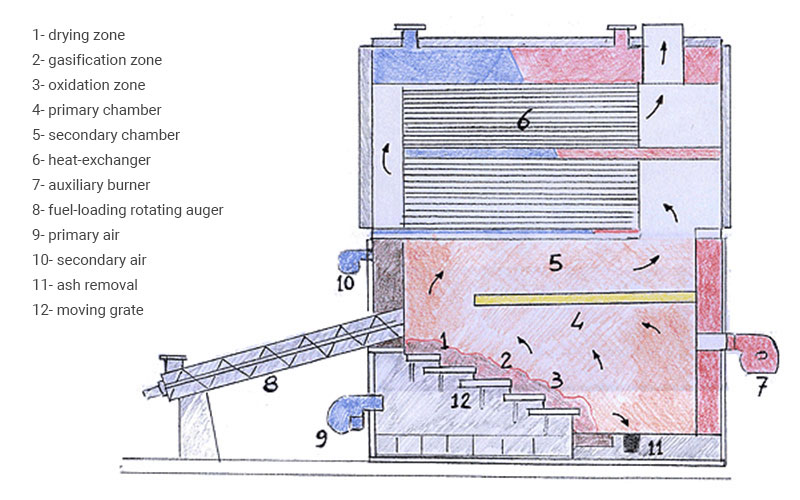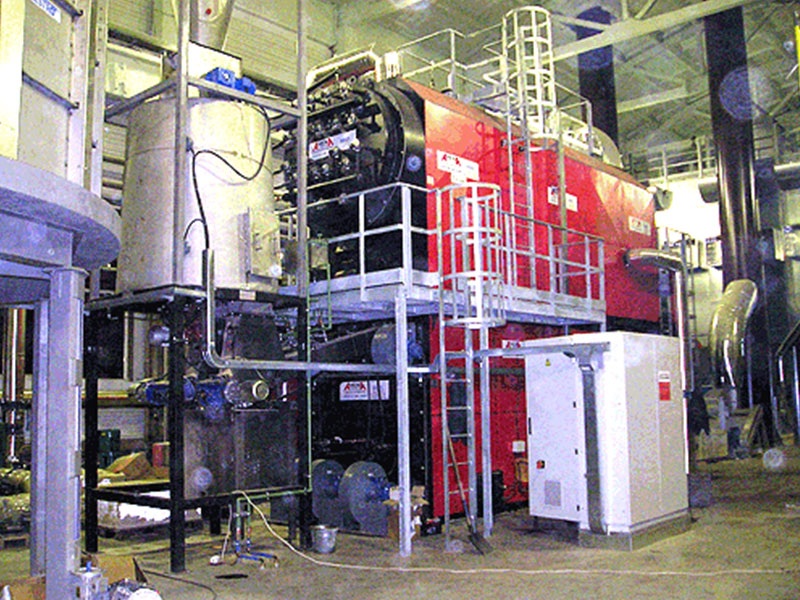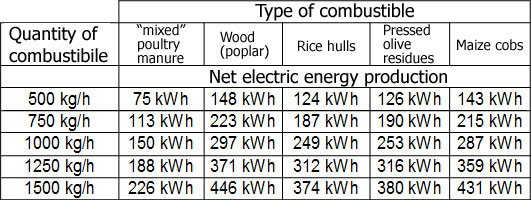Products
Biomasses, energy recovery systems

Over the years, Amboso has acquired considerable experience in the field of energy recovery from biomasses, leading to the development of highly efficient combustion systems, and enabling system size specifications suitable for use by small-scale operators.
These systems are designed to be used for generating re-usable thermal energy or electricity from the poor biomasses remaining after production processes.
When setting up a biomass energy recovery plant, users should consider the following aspects:
nature and quantification of the biomass to be processed for energy recovery – choice of combustion system – fume purification line specifications – energy recovery system specifications
a- nature and quantification of the biomass to be processed for energy recovery
To decide which plant typology should be used, we must consider the nature of the biomass to be processed. We must also know how much biomass is available.
The following table lists the typical characteristics of a number of the most widespread biomasses.
b- choice of combustion system
The table above illustrates the considerable variety of biomasses available, in terms both of humidity and calorific value.
In view of this variety, the “moving grate” boiler combustion system is the most suitable for processing biomasses.
This system enables processing also of high-humidity biomasses. With the moving grate, the fuel can be “turned around”, combustion fume countercurrent mode, and will dry more rapidly.
The following is a very simple illustration of a boiler of this kind.

“moving grate” boiler (Officine del Savio)
c- fume purification line specifications
The fume purification line is a fundamental part of biomass energy recovery systems. Authorisation for the biomass energy recovery plant requires, and is conditional upon, purification system efficiency.
Depending on the biomass to be processed, purification lines range from “simple collection of dust” to what can effectively be called “purification chains”, fitted with DeNOx, post-combustion, dust collection and desulphurization systems.
Amboso directs all the experience acquired over four decades of activity toward this delicate stage of the process.
d- energy recovery system specifications
The heat produced by the fuel is removed from the combustion chamber via the water flowing through the boiler piping.
This water is used as a heat source for various applications. Thermal energy use can be customized on the basis of the end user’s specific needs (heat recovery for production processes, heat production for heating of spaces, cold production by means of installed refrigerating units etc.).
Electricity generating is an increasingly widespread application of thermal energy from boilers.
ORC (Rankine cycle) turbines are installed for this purpose.
Depending on the context, ORC turbines can produce electricity levels of 11-15% of the thermal energy employed.
The organic fluid Rankine cycle (ORC) resembles the cycle of a traditional steam turbine, the difference consisting in the working fluid, which, in this case, is generally a high molecular mass organic fluid. Choice of fluid for optimized thermodynamic cycle yield depends on the temperature of the thermal source available.
ORC installations (e.g. hydrocarbons, HCFC, polysiloxanes, and also CO2) are systems which enable simultaneous production of electricity and thermal energy, made available as water (at a temperature of 60-90°C).
The ORC installation (see diagram) is basically made up of a pump, a turbine and a number of heat exchangers.
The organic working fluid is vaporized in the evaporator via the use of a heat source (in this case, the heated water produced in a boiler).
The vapour of the organic fluid expands in the turbine, passes through a regenerator and is then condensed, using water flow in a heat exchanger. The condensed liquid is pumped into the regenerator where it is pre-heated by the fluid leaving the turbine, and then into the evaporator, thereby closing the cycle.
While not strictly necessary, use of the regenerator increases the yield of the installation.
See the following table, for possible electricity production values according to quantity and type of combustible material used.
Here, we are considering ORC turbines with 12% gross yields. Electricity production is indicated net of self-consumption of ORC unit and of combustion system. This information is, in any case, of indicative value.

Pilot plant
Amboso has constructed and installed an in-house pilot biomass and solid waste combustion plant.
The pilot plant was installed to provide Amboso’s customers with an opportunity to explore first hand the possibility of constructing a combustion and energy recovery plant for thermal energy and/or electricity production.
The pilot plant was constructed for use not only with humid and semi-dry biomass but also industrial waste materials.
Plant thermal energy production is constantly monitored (the capacities and the temperature drop of the fluid recirculating in the boiler are recorded).
To ensure correct plant functioning, the heat produced by combustion is dispersed into the atmosphere by means of a battery with electric fan.
The pilot plant’s function modes vary according to type of combustible material.







